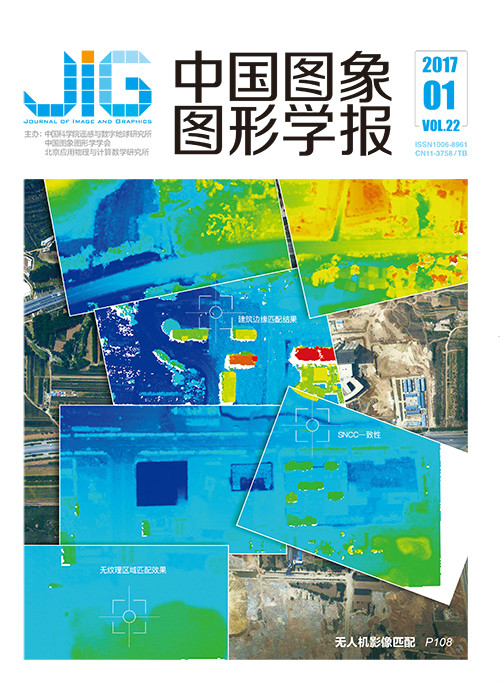
刚性区域特征点的3维人脸识别
摘 要
目的 针对3维人脸识别中存在表情变化的问题,提出了一种基于刚性区域特征点的3维人脸识别方法。方法 该方法首先在人脸纹理图像上提取人脸图像的特征点,并删除非刚性区域内的特征点,然后根据采样点的序号,在人脸空间几何信息上得到人脸图像特征点的3维几何信息,并建立以特征点为中心的刚性区域内的子区域,最后以子区域为局部特征进行人脸识别测试,得到不同子区域对人脸识别的贡献,并以此作为依据对人脸识别的结果进行加权统计。结果 在FRGC v2.0的3维人脸数据库上进行实验测试,该方法的识别准确率为98.5%,当错误接受率(FAR)为0.001时的验证率为99.2%,结果表明,该方法对非中性表情下的3维人脸识别具有很好的准确性。结论 该方法可以有效克服表情变化对3维人脸识别的影响,同时对3维数据中存在的空洞和尖锐噪声等因素具有较好的鲁棒性,对提高3维人脸识别性能具有重要意义。
关键词
Three dimentional face recognition method based on rigid region feature points
Yuan Heng1, Wang Zhihong1, Jiang Wentao2(1.College of Business and Management, Liaoning Technical University, Huludao 125105, China;2.College of Software, Liaoning Technical University, Huludao 125105, China) Abstract
Objective A novel approach to 3D face recognition based on rigid region feature points is proposed to solve the problem of expression variance. Method The feature points of a face image are extracted on the face texture image by image block center vector sampling and probability map spatial relation model approximation, and the feature points in the nonrigid region are deleted. According to the serial number of the sampling points that are extracted from the face texture image, the 3D geometric information of the feature points of the face image is obtained based on the geometric information of the face space, and the subregion of the rigid region centered at the feature points is established. The subregion is used as the local feature for face recognition test. The contributions of different subregions to face recognition are obtained, and the result of face recognition is weighted by the contribution rate of different subregions. Result Experimental tests are performed on the FRGC ver2.0 3D face database. The recognition accuracy rate is 98.5%. The false accuracy rate is 0.001, and the verification rate is 99.2%. The method of non-neutral expression of 3D face recognition demonstrates good recognition performance. Conclusion The proposed approach can effectively overcome the influence of facial expression variance on 3D face recognition because of the deleted feature points in the nonrigid region and has good robustness to the holes and sharp noises in the 3D data. This approach can greatly improve the performance of 3D face recognition.
Keywords
|



 中国图象图形学报 │ 京ICP备05080539号-4 │ 本系统由
中国图象图形学报 │ 京ICP备05080539号-4 │ 本系统由